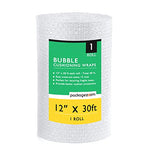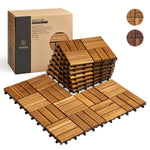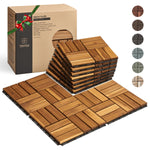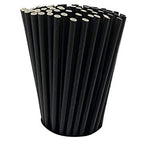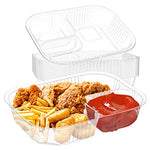You have no items in your shopping cart.
When it comes to unconventional sources of nutrition for animals or even humans, mealworms and maggots often come to mind. These wriggling creatures may seem unappetizing to some, but they have gained popularity as a sustainable and protein-rich food source. In this article, we will delve into the world of mealworms and maggots, comparing their characteristics, uses, and nutritional value. Whether you are considering them as a potential dietary option for your pets or exploring alternative protein sources for yourself, understanding the differences between mealworms and maggots is essential. So let's dive in and explore the intriguing world of mealworms versus maggots!
Mealworms vs Maggots: A Closer Look
What are Mealworms?
Mealworms are the larval stage of darkling beetles, scientifically known as Tenebrio molitor. They are light-brown or yellowish-brown in color, with a segmented body and six tiny legs. Mealworms have a hard exoskeleton, which protects their soft bodies during this stage of their life cycle. These creatures are commonly found in stored grain products and are a popular choice for reptile and bird owners as a nutritious source of food.
What are Maggots?
Maggots, on the other hand, are the larvae of flies, specifically of the order Diptera. They are soft, legless, and typically whitish or cream-colored. Maggots thrive in decaying organic matter, such as rotting flesh or spoiled food. While they may be associated with unsanitary conditions, maggots have recently gained recognition for their potential in waste management and sustainable farming practices.
Appearance and Lifecycle
Appearance of Mealworms
Mealworms have a distinct appearance that sets them apart from maggots. Their cylindrical body is divided into segments, and each segment is covered by a tough exoskeleton. They have six tiny legs near their head, which they use to crawl and burrow. When fully grown, mealworms reach a length of around 1 to 1.5 inches (2.5 to 3.8 centimeters).
Appearance of Maggots
In contrast to mealworms, maggots have a more elongated and worm-like appearance. They lack legs and have a soft body that is often segmented. Maggots typically range in size from a few millimeters to a few centimeters, depending on the species of fly they originate from.
Lifecycle of Mealworms
The lifecycle of mealworms consists of four stages: egg, larva (mealworm), pupa, and adult beetle. Adult beetles lay their eggs in dark and warm environments, such as grain storage or compost piles. The eggs hatch into tiny mealworm larvae, which go through several molting stages, shedding their exoskeleton to grow. After reaching the pupal stage, they eventually transform into adult beetles. This entire lifecycle typically takes around 2 to 4 months, depending on environmental conditions.
Lifecycle of Maggots
Maggots also undergo a complete metamorphosis, transitioning through the egg, larva (maggot), pupa, and adult fly stages. The lifecycle duration of maggots varies greatly depending on the species of fly and environmental conditions. In favorable conditions, maggots can complete their lifecycle in as little as a week.
Nutritional Value and Uses
Nutritional Value of Mealworms
Mealworms are highly nutritious and offer a range of essential nutrients. They are rich in protein, making them an excellent source of animal protein for pets and livestock. Additionally, mealworms contain beneficial amino acids, vitamins, and minerals such as potassium, iron, and zinc. Their nutritional profile makes them a potential dietary supplement for humans as well.
Nutritional Value of Maggots
Maggots also boast impressive nutritional content. They are particularly high in protein, similar to mealworms, and provide essential amino acids that promote growth and development. The precise nutrient composition of maggots can vary depending on the species of fly they originate from and the substrate they feed on.
Uses of Mealworms
Mealworms have a wide range of applications. They are commonly used as feed for pets such as reptiles, birds, and fish. In recent years, mealworms have gained popularity in the human food industry as well. They are used in protein bars, snacks, and even as an alternative ingredient in baked goods. Some adventurous individuals also enjoy adding mealworms to their culinary creations, exploring new flavors and textures.
Uses of Maggots
While maggots may not be as widely accepted for direct consumption by humans, they have found their place in various industries. Due to their ability to break down organic matter, maggots are utilized in waste management processes, such as composting and bioconversion. In the field of medicine, maggots have proven effective in debridement, where they are used to remove dead tissue from wounds, promoting faster healing.
Frequently Asked Questions (FAQs)
Q1: Are mealworms and maggots safe to eat?
A1: When sourced from reputable suppliers and properly prepared, both mealworms and maggots are considered safe for consumption. However, it is crucial to ensure that they are raised and processed in hygienic conditions to minimize the risk of contamination.
Q2: Can mealworms and maggots be used as a sustainable protein source?
A2: Yes, both mealworms and maggots are regarded as sustainable protein sources. They require fewer resources and produce fewer greenhouse gas emissions compared to traditional livestock farming.
Q3: Are there any vegetarian alternatives to mealworms and maggots?
A3: Yes, several vegetarian alternatives, such as tofu, tempeh, and seitan, offer comparable protein content without the need for insect-based sources.
Q4: How can I incorporate mealworms or maggots into my diet?
A4: Mealworms and maggots can be consumed in various forms. They can be added to smoothies, baked into bread or cookies, or even used as a topping for salads. Additionally, they can be ground into a powder and used as an ingredient in protein bars or other food products.
Q5: Do mealworms and maggots have any environmental benefits?
A5: Yes, mealworms and maggots contribute to environmental sustainability. Mealworms can be reared on organic waste materials, diverting them from landfills. Maggots aid in waste decomposition and play a crucial role in recycling organic matter.
Q6: Can mealworms or maggots cause allergies?
A6: While allergies to mealworms or maggots are relatively rare, some individuals may have sensitivities to certain proteins present in these organisms. As with any new food, it is advisable to start with small quantities to assess individual tolerance.
Conclusion
In the debate of mealworms vs maggots, both these creatures have unique qualities and offer intriguing possibilities. Whether you are an animal owner seeking nutritious feed options or an individual interested in sustainable protein sources, exploring the world of mealworms and maggots can open doors to alternative food choices. From their appearance and lifecycle to their nutritional value and uses, each aspect of mealworms and maggots contributes to a deeper understanding of their potential benefits. So, the next time you encounter mealworms or maggots, remember their untapped potential in improving nutrition, reducing waste, and shaping a more sustainable future.
Check Out Our Trash Bags:
Introducing our 15 Gallon Tall Kitchen Bags! These bags are perfect for everyday kitchen waste and feature a strong and reliable design.
"These bags have made my kitchen cleanup a breeze. Highly recommend them!"
- Emily Jarred
"I've been using these bags for months now, and they never disappoint. Great quality!"
- Michael Anderson
Introducing our 39 Gallon Heavy-Duty Trash Bags! These bags are perfect for handling larger loads of trash and are built to resist tears and leaks.
"These bags are the best I've ever used. They can handle even the toughest trash."
- Lewis Martinez
"I'm impressed by the durability of these bags. They never fail to hold up, even when filled to the brim!"
- Jessica Roberts
Introducing our 33 Gallon Heavy-Duty Trash Bags! These bags are designed to handle heavy loads of trash, making them ideal for residential and commercial use.
"I've never had a bag that could handle so much trash. These bags are a game-changer!"
- Samantha Turner
"I run a small restaurant, and these bags are perfect for our needs. They're strong, reliable, and affordable!"
- David Patterson
Introducing our 55 Gallon Contractor Trash Bags! These bags are designed to handle heavy, bulky trash and are commonly used in construction and renovation projects.
"These bags are an absolute lifesaver on our construction sites. They can handle anything we throw at them!"
- Mark Thompson
"I've used many different contractor bags, and these are by far the best. They never let me down!"
- Rachel Collins












